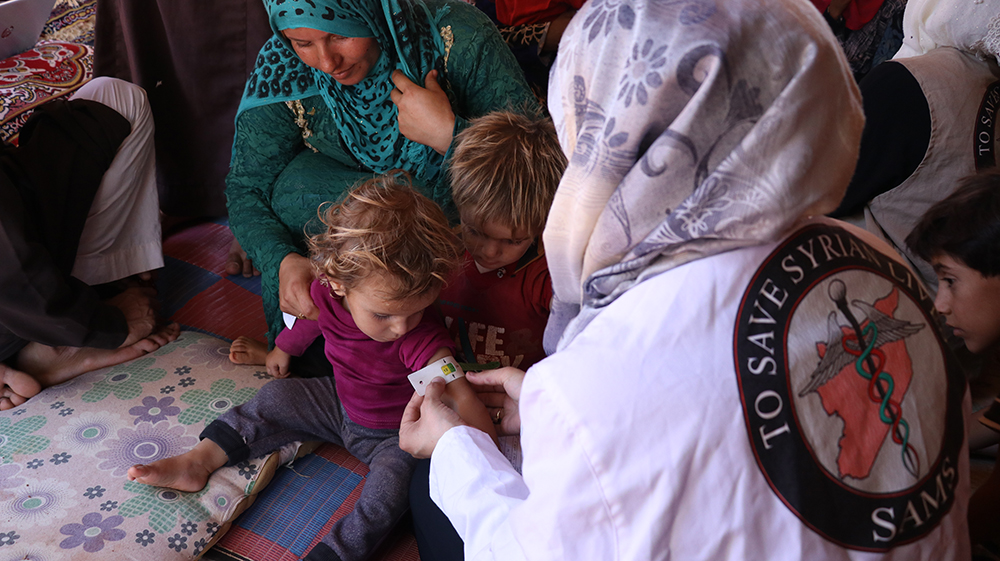December 8, 2021
Content Warning: Please be advised that this blog post discusses gender-based violence. While graphic details are omitted, mentions of sexual violence and other forms of gender-based violence may be triggering for some readers.
What is GBV?
GBV stands for gender-based violence, a term that encompasses all acts of violence aimed towards a particular person because of their gender as well as acts of violence that disproportionately impact one gender. GBV refers to actions including domestic abuse or intimate partner violence, sexual harassment, forced or early marriage, and certain forms of cyberviolence, such as stalking.
GBV can happen to anyone and is unfortunately widespread globally. However, women and girls are disproportionately affected by most forms of GBV, and the elimination of violence against women is a struggle that is critically linked to prevention and response to GBV. The WHO estimates from 2018 suggest that globally, 27% of married or partnered women between the ages of 15 and 49 had experienced physical or sexual violence at the hands of their partner at least once in their lives. According to the same report, another 6% of women will experience sexual violence perpetrated by someone who is not their partner. However, it is crucial to note that GBV prevalence data is notoriously difficult to gather accurately due to conflict and insecurity, limited access to women in low-income countries where GBV is more prevalent, limited services that support survivors of GBV, and rampant underreporting that is primarily based in stigma and survivors’ fear of retribution. As a result, GBV experts know that the real number of GBV cases is much higher than reported, and urge responders and researchers to avoid presenting prevalence data without this context.
Conflict and GBV
Conflict is considered a driver of GBV, as conflicts often exacerbate pre-existing risks for women and girls. Firstly, conflict often serves as a direct cause of GBV, through the use of extrajudicial killings, torture, and sexual violence by armed parties to conflicts. These actions frequently include gendered dimensions and are also more likely to impact men and boys than other forms of GBV. Opportunistic violence is also common in times of conflict. Furthermore, conflict often brings insecurity and poverty, both conditions that put women and girls at risk of violence. For example, in conflict settings families experiencing poverty may seek to have their daughter married at a young age in order to reduce the number of people the family must care for, or to secure a dowry. This leads to remarkably high rates of underage marriage in conflict settings, exposing children to a host of risks, including an increased risk for intimate partner violence. Women and girls’ access to essential services such as healthcare and education are also limited during times of conflict. These services serve as vital lifelines for prevention and response to GBV, and lack of access increases the risk that women and girls face.
COVID-19: Further Reductions in Support
As the COVID-19 pandemic swept across the world over the past two years, its impacts have ranged far beyond anyone initially anticipated. That a pandemic could have gendered implications came as a surprise to many, but women have experienced the pandemic differently than men have. Early research from Asia found that women received less information about COVID-19, had more barriers to accessing medical care, and were more likely to lose their jobs as the result of changes caused by the pandemic. In addition to these broader effects, COVID-19 has also specifically impacted GBV. As countries around the world went into lockdown to slow the spread of COVID-19, calls to domestic violence support and shelter hotlines increased between 25% and 33% in countries like France, Spain, Argentina, Cyprus, and Singapore. This is because vulnerable individuals were forced to spend time in close proximity with family members or partners who perpetrated violence against them. The financial burden that the pandemic’s economic impacts have had on most countries worldwide also represents a significant risk factor for GBV, as money concerns are often cited as a driver of GBV at the household level. Furthermore, the same stay at home orders that contributed to the rise in intimate partner violence often meant that access to in-person services for survivors of GBV were limited. Additionally, the increased amount of time children spent online for education, socializing, and other activities puts them at increased risk of forms of GBV including harassment, stalking, and grooming.
GBV in Syria
The conflict combined with existing gender norms and expectations put vulnerable groups in Syria at an especially high risk for GBV. Anyone can experience GBV, but the ways in which GBV manifests itself may differ along gendered lines. For men, rates of GBV are much higher in detention, where sexual violence is often used as a form of torture. LGBTQ+ men are also at much higher risk for GBV than cisgender, heterosexual men due to societal beliefs around LGBTQ+ identities. For most men and boys who experience GBV in Syria, the violence used against them is a tool of war, intentionally seeking to emasculate and shame them, taking full advantage of the incredible stigma surrounding male survivors of GBV.
Women and girls, however, experience a broader range of GBV. Not only are women also subjected to conflict-related violence, but they are also much more likely to experience intimate partner violence, psychological and emotional abuse, early and forced marriage, femicide and other forms of family violence, and sexual abuse and exploitation within the humanitarian response. These forms of GBV often coexist; for example, a 2020 report found that 70% of women and girls surveyed in northwest Syria said that child brides were more likely to experience intimate partner violence. Early marriage has always existed in Syria, but the conflict has increased its prevalence. Families are often concerned by the potential of conflict-related violence, and mistakenly view early marriage as a form of protection for their daughters, when it in fact puts them at greater risk for violence from the men they marry. In addition to the increased risk of intimate partner violence, early marriage can also result in deepening intergenerational poverty, early withdrawal from education and higher rates of illiteracy, significant psychological stress, and sexual and reproductive health complications due to early pregnancy.
As has been stressed throughout this post, GBV is almost always underreported, and this remains true in Syria for a myriad of reasons. Firstly, social stigma surrounding GBV makes it difficult for survivors to come forward, as they may fear retribution, silencing, or victim blaming from within their communities. Men, boys, and LGBTQ+ individuals face especially strong stigma when reporting cases of GBV. For women and girls, their families may be perpetrators of GBV, which can increase the fear of retribution, especially as family violence and femicide remain concerns. In cases of sexual exploitation and abuse within the aid system, reporting GBV may mean losing access to vital humanitarian assistance if an organization does not have adequate protection and accountability measures in place. As previously mentioned, the COVID-19 pandemic has increased the prevalence of GBV, as well as the potential ramifications for reporting.
The Response
While the GBV situation in Syria is serious, civil society and humanitarian organizations are working to provide support to vulnerable groups, especially women and girls. In 2020, 148 NGOs across Syria reached 1,252,515 people with GBV prevention or response services. GBV response services refer to the set of actions taken after a GBV incident to support the survivor and ensure that they have access to protection, legal assistance, health services, mental health resources, and anything else they need to recover. GBV prevention refers to activities that seek to change the underlying cultural norms that contribute to GBV, including awareness-raising, advocating for women’s rights, and activities that empower and protect at-risk groups.
SAMS is proud to be one of the organizations preventing and responding to GBV in Syria and the surrounding countries. In northwest Syria, SAMS has created nine safe spaces for women and girls, where qualified staff provide case management services to survivors of GBV and implement educational activities to raise community awareness. In 2021, these safe spaces received reports of 20-30 new cases of GBV per month on average, and provided the survivors with appropriate response services. SAMS also reached 5,016 community members in northwest Syria in 2021 through awareness-raising sessions that aim to alleviate the risk of GBV. In Jordan, SAMS offers specialized case management services that focus on how and when to seek help for abuse and to connect survivors together for community support. SAMS implemented 1,098 sessions in 2021 for GBV cases, 54% of whom were women.
SAMS also offers awareness-raising workshops, which are designed to facilitate the establishment of self-sustaining support networks for GBV survivors. In 2021, SAMS hosted 58 workshops attended by 634 individuals. Finally, SAMS is committed to preventing sexual abuse and exploitation (PSEA) and is currently training staff from Jordanian community-based organizations to develop and strengthen safeguarding protocols.
Nadine’s Story: Education and Community Engagement for Protection
Nadine,* an 18-year-old girl experienced sexual harassment as a child. During a GBV awareness-raising session hosted by SAMS in Jordan, Nadine sought help from staff, telling them that her parents wanted to force her to marry. She refused because she wanted to continue her education, and still experiences anxiety and fear around men as a result of the harassment she experienced. Nadine’s mother insisted on the marriage, because she believes that a suitable husband can protect her daughter. As her parents insisted, Nadine disclosed the harassment to them to explain why she did not want to get married. At the time that Nadine contacted SAMS, her parents were seeking a gynecologist to “test” her virginity as a result of her disclosure, a process that is both unsubstantiated by medical science and is also considered a form of GBV in and of itself. The staff working with Nadine contacted her parents, and worked with them to help them understand different forms of GBV, and to understand the effects of sexual violence that their daughter is experiencing. With this education, Nadine’s parents saw the importance of psychological treatment for her. Nadine was evaluated by a social worker, who found signs of anxiety and PTSD. Nadine continues to receive psychosocial support from SAMS, and her parents are much better-equipped to support their daughter and understand her needs.
*name changed for privacy
Conclusion
Gender-based violence is all too prevalent in our communities. However, with every neighbor who learns something new about harmful gender norms, every survivor who feels protected enough to come forward, and every one of us who seeks to empower women and other vulnerable people, we make the world a slightly better, safer place. Through education and compassionate, dignified care, we can support survivors of GBV and decrease the risk of violence in our communities.



